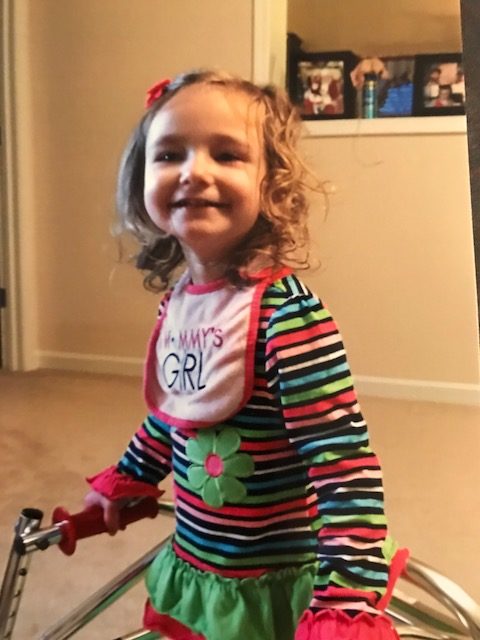
Aug 20, 2018
Shortly after birth, the participant was found to have low blood platelet levels (thrombocytopenia), anemia, a heart defect (atrial septal defect), low muscle tone (hypotonia), cataracts, and a blueberry muffin rash. She required transfusions with packed red blood cells and platelets for anemia and nasogastric intubation (NG tube) for feeding. She underwent an infectious workup, which was negative. A brain MRI at this time was also normal. She underwent cataract removal at 19 and 20 months and her heart defect closed spontaneously.
Around 18 months during a routine screening exam, concerns were raised about her hearing. She was diagnosed with bilateral sensorineural hearing loss and currently wears hearing aids.
Around 3 years, the participant started to have seizure-like spells where her right arm would stiffen and shake for 10-20 seconds. She would also laugh during these episodes. She was treated with Trileptal and, since then, has had no further spells. Around this time, she had a gastrostomy tube (G tube) placed to help with feeding.
Developmentally, the participant is delayed. She sat at 15 months and crawled at 29 months. Currently she does not walk but is able to pull herself up to a standing position. She said single words such as “mama” and “baba” around one year but has not made these sounds since. She uses a picture book for communication and is making progress. She has some repetitive behaviors like hip rocking and leg extensions.
In terms of her family history, the participant had a brother who was born at 29 weeks and died at two weeks due to complications of fetal hydrops. He similarly had a blueberry muffin rash.


Clinicians and researchers are investigating the following homozygous genetic change to see if it is causing the participant’s symptoms:
If this participant sounds like you or someone you know, please contact us!